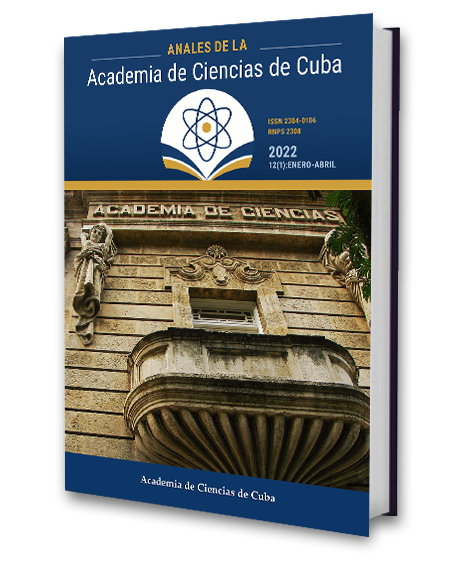Time behaviors of the active and accumulative cases during the second and third COVID-19 epidemic reappearances for Santiago de Cuba province
Keywords:
COVID-19, susceptible-exposed-infected-recovered model, active and accumulative cases.Abstract
Introduction. This study shows time behaviors of the active and accumulative cases during the second and third COVID-19 epidemic reappearances for Santiago de Cuba province (November 1, 2020 to September 29, 2021). The parameter values of this model are reported at different time instant of this period and shown those reported in the first COVID-19 epidemic wave in this province. Methods. Unlike of this first epidemic wave, the estimation of model parameters confirms that these two epidemic waves characterize by a high virus transmission and individual mobility, and low risk perception, social responsibility and effectiveness of implemented governmental actions.Results It is concluded that this model and Bayesian algorithms describe official data reported by the Ministry of Public Health of the Republic of Cuba for the Santiago de Cuba province and it constitutes a useful tool to take decisions by the Provincial Defense Council and Provincial Office of Public Health. The risk perception and social responsibility of individuals influence markedly in the attenuation/increase of COVID-19 transmission.
Downloads
Published
How to Cite
Issue
Section
License
The journal Anales de la Academia de Ciencias de Cuba protects copyright, and operates with a Creative Commons License 4.0 (Creative Commons Attribution-NonCommercial License 4.0). By publishing in it, authors allow themselves to copy, reproduce, distribute, publicly communicate their work and generate derivative works, as long as the original author is cited and acknowledged. They do not allow, however, the use of the original work for commercial or lucrative purposes.
The authors authorize the publication of their writings, retaining the authorship rights, and assigning and transferring to the magazine all the rights protected by the intellectual property laws that govern in Cuba, which imply editing to disseminate the work.
Authors may establish additional agreements for the non-exclusive distribution of the version of the work published in the journal (for example, placing it in an institutional repository or publishing it in a book), with recognition of having been first published in this journal.
To learn more, see https://creativecommons.org






